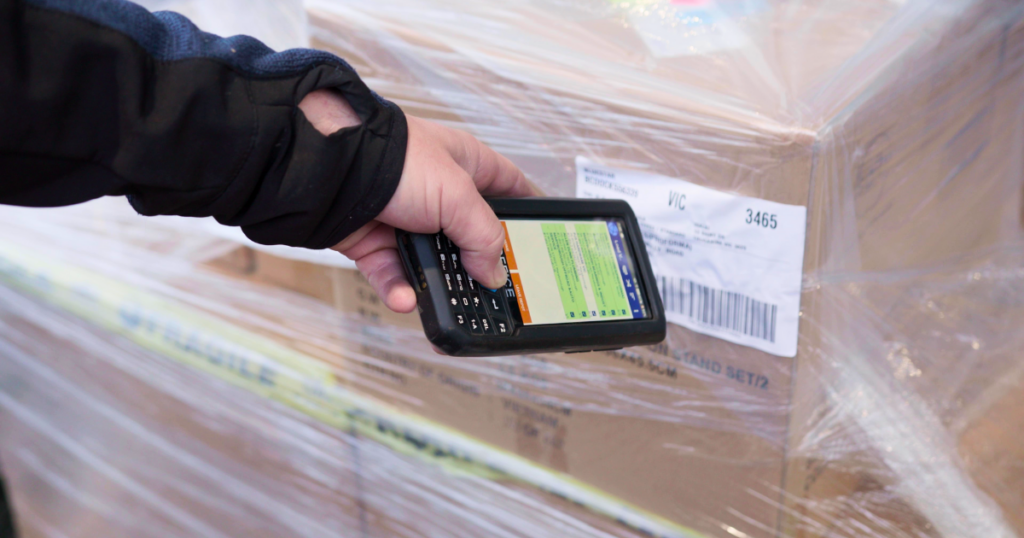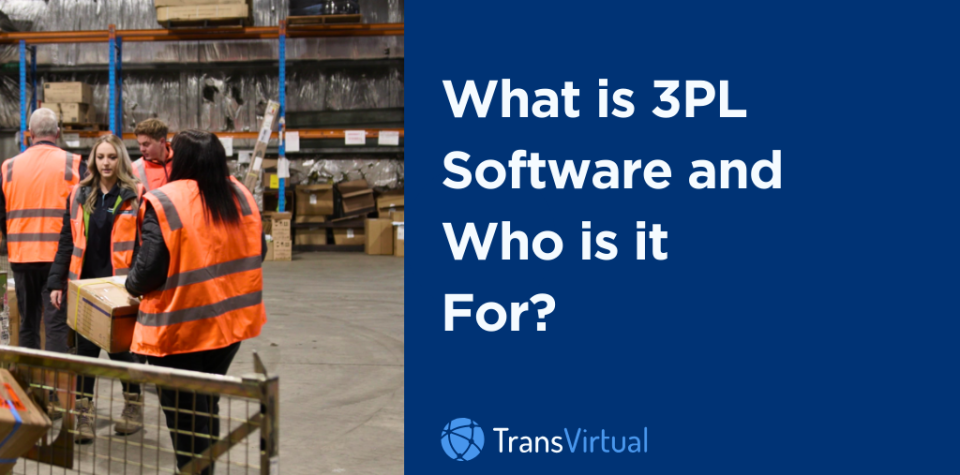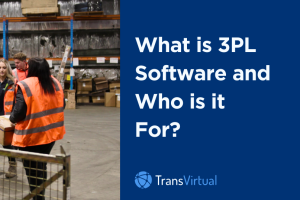Table of Contents
Third-party logistics (3PL) is complex. Frustratingly so, sometimes.
There are parties to keep up with, from shippers and distribution centres and third-party logistics providers and regulatory authorities.
With this, there are tasks to stay on top of, including driver management, customer demands, inventory management, and accounting needs. And if you’re stuck with manual data entry, there are endless paper trails to trace and organise.
As organizations grow and the volume of logistics tasks exceeds what the in-house team can manage, many businesses outsource their logistics needs to third parties, especially for scalability.
That’s where third-party logistics ,and the technology that drives it, comes in. We’ve prepared a guide to help you understand what is 3PL software, along with its advantages and key features.
What is 3PL? And, What Do Third Party Logistics Providers Do?
Third-party logistics (3PL) is exactly as the name implies. It’s a setup where businesses delegate the logistics process to a third party. A 3PL provider typically offers warehousing, distribution, freight forwarding, and inventory management.
Lets use a fashion retailer as an example. Say they produce their clothing, bags, and shoes inhouse but want to outsource warehousing, order processing, and shipping.
So, they work with a 3PL provider for this. Once an order comes in, the 3PL provider checks the availability of ordered items in the warehouse, pick and pack orders, and delivers them to the customers’ doorsteps.
What is 3PL Software?
If you’re in the logistics game, then you know there are typically three arms to an Australian supply chain. First, the product’s creator. Second, a large shipping company to truck those products. And lastly a third-party logistics company to hold the products and get them onto the trucks.
A 3PL provider is usually set up as a warehouse or distribution centre, commonly known as a DC.
It houses consumer goods and handles the distribution required for deliveries to land on people’s doorsteps. They’re usually set up in central locations where there are high shipping volumes with scores of trucks coming and going.
There’s a lot of moving parts by now, isn’t there?
With all of these separate parties involved in the supply chain, there needs to be away for them to communicate quickly, effectively and accurately. There also needs to be a simple way for 3PL providers to manage the logistics involved with warehousing and fulfillment.
And this is where 3PL software comes into play.
3PL software automates, speeds up and smooths out the process for both the 3PL provider and the vendors who hire them.
For the vendor, it will help them communicate better with the 3PL provider they work with. And for the provider, a full-featured 3PL software will improve their warehousing, distribution and customer communication, leading to significant cost savings by:
Optimizing routes
Reducing fuel consumption
Reducing vehicle maintenance costs
Reducing the costs per delivery
Overall, you get a solution that gives you full visibility into the order and delivery process.
This efficiency not only lowers expenses but also enhances the customer experience by ensuring scalability, promoting business growth, and enabling the completion of core business operations.
The entire supply chain becomes faster, less laborious, more visible and more efficient. And that puts more dollars back in pockets.
Who Can Benefit from 3PL Software?
Warehouses
Whether you work for the product creators directly, or a third-party provider, 3PL software will help you manage your inventory more quickly and accurately.
A comprehensive 3PL software has functions that are designed to:
Automate orders with shopping cart integrations
Track items within your warehouse
Automate customer notifications
Additionally, 3PL software integrates with major ecommerce platforms, enabling businesses to sell on multiple channels and connect to all the tools they use.
Distributors
3PL software enables you to turn orders around incredibly quickly and with easy communication. A distribution centre generally holds products for a shorter amount of time than a warehouse will, and this speed and agility is essential to retaining customers.
3PL software improves distribution with:
Barcode scanners to track items
Customer portal with inventory, billing and reporting information
A fully-featured software will service two kinds of 3PL business

3PL businesses can be asset-based or non-asset-based, and 3PL software needs to work for both.
Asset-based 3PL providers own some or all parts of the supply chain, like trucks, warehouses and distribution centres. These businesses will need software with a broader range of features to handle shipping, fleet management and warehouse management.
Non-asset-based 3PL providers don’t own any physical assets within the supply chain. They act as a third party, providing access to an established network of partners involved in moving goods.
In Australia, these non-asset-based 3PL providers are often referred to as Freight Managers, and they require their software to be more focused on booking freight and communicating with their network. Advanced transportation management systems are crucial for these providers, offering real-time visibility that enables efficient communication and logistics management, including tracking drivers’ locations, statuses, updated ETAs, and customer information.
So, what are the features that allow all of this to happen? And what do they mean for you?
3PL software features
A full-featured 3PL software has many functions, all focused on improving your business by increasing efficiency, visibility and profits.
So how does that happen?
Let’s go through just a few of the features that help.
Automated invoicing
Invoicing and billing features of 3PL software not only lets you create and track invoices for your services, but they also streamline the entire order fulfillment process, from automated orders and inventory management to dispatch, invoicing, and reporting. You can even automatically generate and send invoices.
Customised workflows
As a 3PL provider, your clients will have a large variety of needs. They might design products with barcodes or RFID tags (for easier identification at the distribution centre), or they may have no tracking technology at all. Obviously, these two clients will need your staff to perform a very different set of actions. With 3PL software, you can customise your workflow to suit your differing clients. Your staff will be able to work faster, saving you time and labour. Additionally, real-time tracking enhances last mile delivery services by providing up-to-the-minute updates, communication, and data visualization.
Powerful analytics
Measuring results with manual writing and hard copies is time consuming and often ineffective. The tedious process makes it hard for you to optimise your teams’ performance for efficiency and quality. 3PL software can show you powerful, automated data to give you real insight into your performance and, importantly, show you where you can improve.
Fleet and transport management
This is a non-negotiable, isn’t it? Full-featured 3PL software allows you to conduct dispatch and load planning as well as order management, rating and billing.
Third-Party Logistics Trends
There’s no doubt about it, third-party logistics software has led to innovation within the supply chain and in particular, within 3PL networks. There are two significant trends worth keeping an eye on.
Mobile solutions
You’re in the logistics game, so you know that supply chain operations are incredibly mobile.
Thankfully, gone are the days when you needed to take notes and update the software back to the desktop. Modern cloud-based solutions allow you to update supply chain activities on the go and in real time (and this is how you increase visibility, efficiency and speed).
AI tracking
Many businesses now attach IoT sensors and RFID tracking to their shipments. When the shipment arrives, your 3PL software accounts for it automatically. AI can also: perform analytics, learn to anticipate demand and help you stay on top of fleet maintenance.
Improving customer experience
Modern 3PL software is revolutionizing customer service by allowing customers to efficiently manage returns, offering features like generating return shipping labels and tracking returns, which streamlines the process of getting products processed and back into inventory.
Wondering how this software can help you?
We’re all in for an interesting future when it comes to the benefits of software for 3PL.
Utilizing 3PL management software can significantly help businesses achieve their business goals by dynamically optimizing logistics processes, ensuring alignment with the company’s objectives.
Focusing on the end customer is crucial for future success, and 3PL software plays a pivotal role in this by providing real-time visibility and ensuring shorter transit times.
Leveraging the software’s logistics management features can effectively attract potential clients. If you’d like to talk about how TransVirtual can help you keep up with these rapid changes (and those yet to come), get in touch or call us for a chat today. We are here to help.



